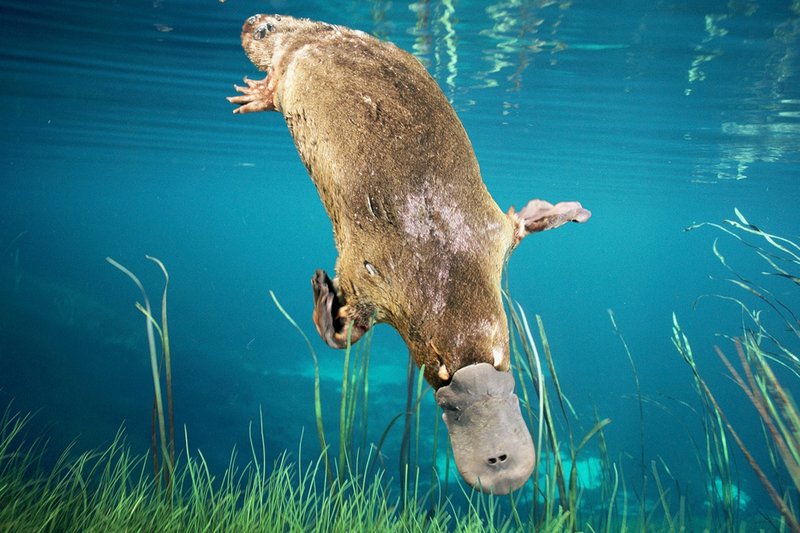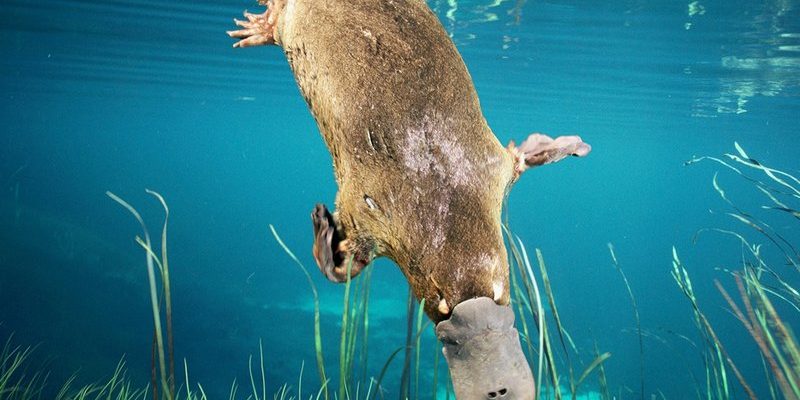
Imagine living in a place where temperatures can plummet, and your food is sometimes hard to find. The platypus takes all this in stride. With its blend of unique traits, it’s perfectly equipped to handle the challenges of its watery habitat. The platypus isn’t just a survivor; it’s a master of adaptation.
Unique Physical Adaptations
When you look at a platypus, the first thing you notice is its unusual shape. This creature has evolved some pretty unique physical adaptations to help it survive. Its webbed feet act like paddles, allowing it to swim with ease through rivers and lakes. The platypus can retract these webs when on land, revealing sharp claws for digging. This clever design means it’s versatile—able to hunt for food underwater while also making homes in burrows along the banks.
Their thick fur is another remarkable feature. Not only does it keep them warm in chilly waters, but it also repels water. Imagine wearing a jacket that keeps you dry no matter how wet it gets! The fur traps a layer of air close to the skin, providing insulation. This is crucial when the temperature drops, helping the platypus stay active and hunt for food even in the colder months.
Let’s also not forget the platypus’ bill. It’s not just for show; this bill is packed with sensory receptors that allow the platypus to detect electric fields produced by potential prey. So while you or I might rely on our eyes to spot dinner, the platypus can “see” its food through electrical signals—a handy skill when foraging underwater where visibility might be low.
Behavioral Adaptations
Beyond physical traits, the platypus has some smart behavioral adaptations that help it endure tough environments. For example, this animal is primarily nocturnal, which means it’s active at night. By venturing out after dark, it avoids the heat of the day and reduces competition with other animals for food. Plus, it can hunt for insects, crustaceans, and even small fish when they are most abundant.
Another fascinating aspect is the platypus’ feeding strategy. When hunting, it dives underwater, using its bill to sift through mud and rocks. It relies on touch and electroreception to find food, which means it doesn’t need to rely on sight. This method allows it to navigate murky waters and still bring home a meal. After foraging, it stores its food in cheek pouches to eat later, showing a level of resourcefulness that’s truly impressive.
What’s more, the platypus is known to create elaborate burrows that provide protection from predators and harsh weather. These burrows can be quite complex, featuring multiple entrances and insulated chambers. It’s not just a home; it’s a fortress that keeps the platypus safe while it rests.
Habitat Flexibility
One of the secrets to the platypus’ success is its habitat flexibility. This species isn’t picky about its living space; you can find it in rivers, streams, and lakes, often preferring environments where there’s a mix of still and flowing water. It cleverly adapts its lifestyle based on the environment around it.
In regions where water levels fluctuate, the platypus has adapted to hunt in different types of environments. During dry spells, it can shift its diet slightly to focus on whatever is available, showing how adaptable it truly is. This flexibility is crucial when facing changing climates or habitats that might not offer abundant food year-round.
In instances where water bodies dry up, platypuses can move to nearby rivers or streams without skipping a beat. Their robust nature allows them to travel relatively long distances to find new homes and hunting grounds, showcasing their resilience in the face of change.
Climate Resilience
The platypus also exhibits amazing climate resilience. As climate change continues to impact the environment, affecting water availability and temperature, these creatures have shown they can adapt. They’re often found in areas that face seasonal flooding, which is part of their survival strategy.
For instance, during drought periods, when food is scarce, the platypus can lower its metabolism. This means they need less food to survive, allowing them to endure until conditions improve. This ability to adjust their energy needs is a brilliant survival tactic, helping them last through tough times when food isn’t plentiful.
Another fascinating aspect of their resilience is their fur. The thick coat not only keeps them warm but also plays a role in thermoregulation. When temperatures soar or plummet, they can maintain their body heat, which is essential for their survival. This trait allows them to thrive in various climates, from the tropical regions of Queensland to the cooler southern areas of Tasmania.
Dietary Adaptations
The platypus has a unique and specialized diet that plays a significant role in its survival. It primarily feeds on insects, larvae, and small aquatic creatures. This diet is rich in protein, providing the energy the platypus needs to stay active and healthy.
You might be wondering how it catches its food, especially underwater. As I mentioned earlier, the platypus relies on its extraordinary bill equipped with special sensors to locate prey. It dives to the bottom and uses its bill to scoop up whatever it can find. Once it’s back on the surface, it can take its time to eat, thanks to its cheek pouches.
Interestingly, the platypus doesn’t have teeth, which can be a drawback. Instead, it crushes its food using hard plates in its mouth. This adaptation is fascinating because it shows how the platypus has evolved to make the best of its circumstances, turning what might seem like a limitation into a practical advantage.
Conservation and Challenges
Despite its many adaptations, the platypus faces challenges that threaten its survival. Habitat loss due to urban development, pollution, and climate change are significant concerns. As rivers and lakes are altered, the delicate ecosystems they rely on can be disrupted.
Conservation efforts are crucial to help protect these unique animals. Organizations are working to restore habitats and reduce pollution in waterways. Efforts to educate the public about the importance of preserving platypus habitats can also make a difference.
Another challenge is the impact of climate change, which affects water availability and temperatures. As we see changes in the weather patterns, it’s vital to monitor how these shifts influence platypus populations. The more we understand their needs, the better equipped we are to ensure their continued survival.
The platypus is truly a marvel of nature. With its unique adaptations, clever behaviors, and flexible habits, it has carved out a niche in some of the harshest environments. As we continue to learn more about this amazing creature, it’s essential to appreciate the delicate balance of its ecosystem and the efforts needed to keep it thriving. Who knew that such a peculiar creature could teach us so much about resilience and adaptation? In the face of challenges, the platypus remains a symbol of survival, reminding us that life can thrive even in the toughest conditions.

